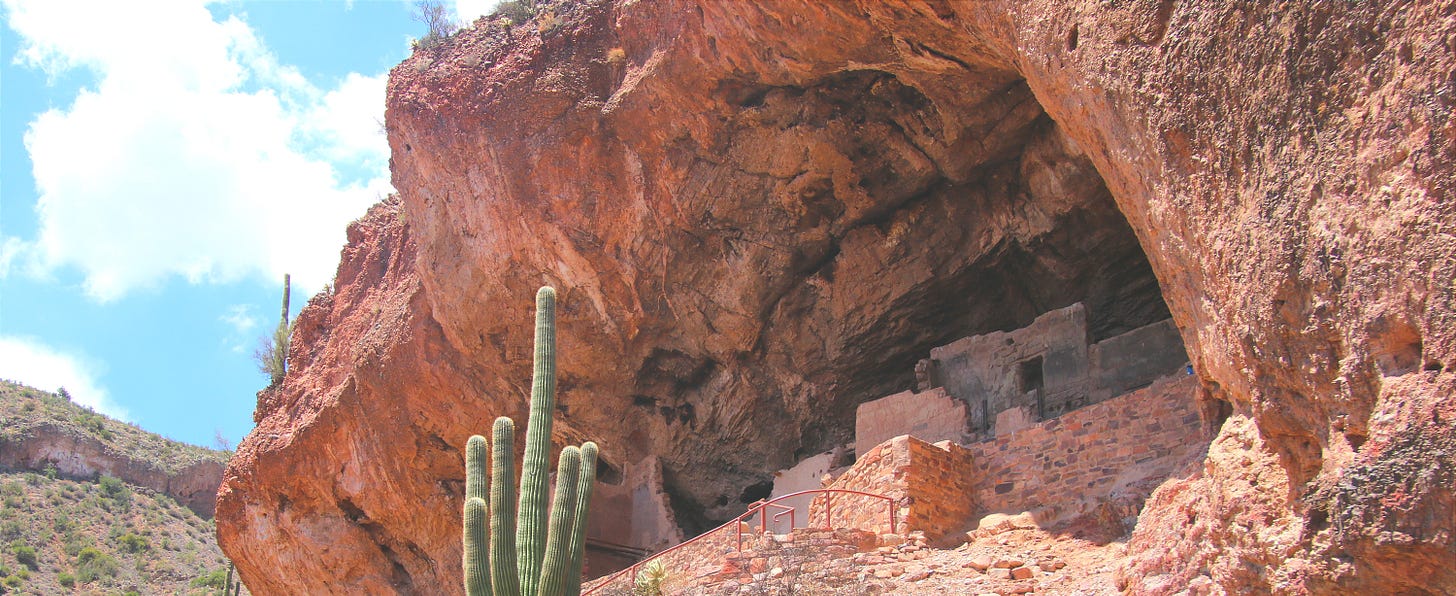The Ancient Dwellings in the Cliffs
My Visit to Tonto National Monument
A couple of years ago, my family and I visited Tonto National Monument in Arizona, and I still think about it. It’s one thing to read about ancient civilizations in history books, but it’s another to stand inside the actual ruins where people of the past lived, looking out at the same view they once saw. Sitting high in the cliffs, surrounded by the rugged beauty of the Sonoran Desert, these Native American cliff dwellings are more than just an archaeological site, they are a reminder of people, a culture, and a way of life that existed long before we ever set foot here.
A Village in the Cliffs
If you’ve never been, Tonto National Monument is a set of Salado cliff dwellings tucked into the mountains of central Arizona. When you first see them, it almost doesn’t seem real. The ruins sit high up on the side of a mountain, built into natural caves that overlook the vast desert valley below. The hike up isn’t too bad (though I won’t lie, Arizona heat is no joke), but once you reach the dwellings, it’s like stepping into another world (and the view is totally worth it).
The rooms are still standing after more than 700 years! You can walk through them, see the carefully constructed walls, and imagine what life was like for the people who lived here. The Salado people built these dwellings sometime in the 13th or 14th century, carving out a home in this desert terrain. They created pottery, grew crops, and built a society in a place that, to most of us today, seems impossible to live in.
The Upper Cliff Dwelling is even bigger and more remote, requiring a guided tour to visit. It has over 40 rooms, showing just how developed this community once was.
Who Were the Salado?
The Salado were a Native American group that lived in what is now central Arizona from around the 13th to 15th century. They were skilled farmers, artists, and builders, known for their polychrome pottery (which has some of the most intricate designs of any pottery from the Southwest). What’s fascinating is that their culture had a strong emphasis on inclusivity and blending traditions, which is why their art and architecture feel so unique compared to neighboring groups. But by the mid-1400s, they vanished from the region, leaving behind only their structures and poetry.
Why It Matters
I think what makes places like this so powerful is that they remind us how much history is right in front of us. The Salado weren’t as well-known as other Native American cultures like the Ancestral Puebloans or Hohokam, but they were just as advanced in their own way. They were a blend of different cultures, influenced by trade and migration, and their pottery reflects that.
But beyond the artifacts, there’s something about standing in the same space as people from centuries ago that puts things into perspective. It makes you realize how much the world has changed, but also how much of it stays the same.
Final Thoughts
If you’re ever in Arizona and looking for something beyond the usual tourist stops, Tonto National Monument is worth it! It’s a reminder of the people who came before us, the lives they built, and the stories left behind in the cliffs.



Wonderful writing!